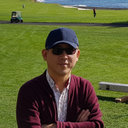Adhesive barrier/directional controlled release for cartilage repair by endogenous progenitor cell recruitment.
Keywords
Abstract
A new design concept in controlled release chemistry is reported in this study. Unlike current depots that release drugs in all direction by an isotropic way, we demonstrate that directional release only to a clinically beneficial direction results in improved disease treatment. To achieve the directional drug release, catecholamine adhesion chemistry was used to establish robust interfacial adhesion. For this purpose, water-resistant catechol-conjugated chitosan (CHI-C) adhesive gel patch was used. We chose a cartilage repair model to test our hypothesis. The adhesive barrier exhibited directional release of platelet-derived growth factor-AA (PDGF-AA) only toward the marrow cavity defect areas. This directional PDGF-AA release greatly promoted effective recruitment of human mesenchymal stem cell (hMSCs). Moreover, the adhesive barrier prevented further migration and dispersion of the hMSCs that otherwise were not properly located to the disease site. In vivo imaging and macroscopic histological assessments demonstrated significant improvement of cartilage tissue, suggesting directional controlled release can be a general concept for improvement of tissue regeneration. This CHI-C barrier is expected to make a significant contribution in cartilage tissue engineering without cell transplantation as well as application for other tissue engineering.



